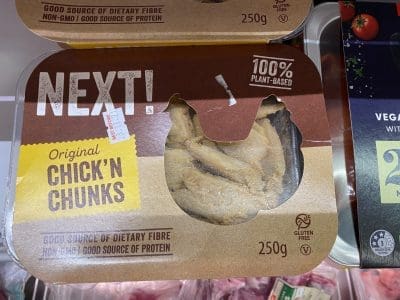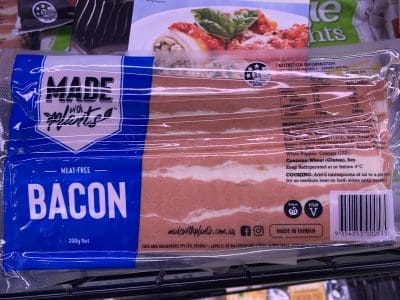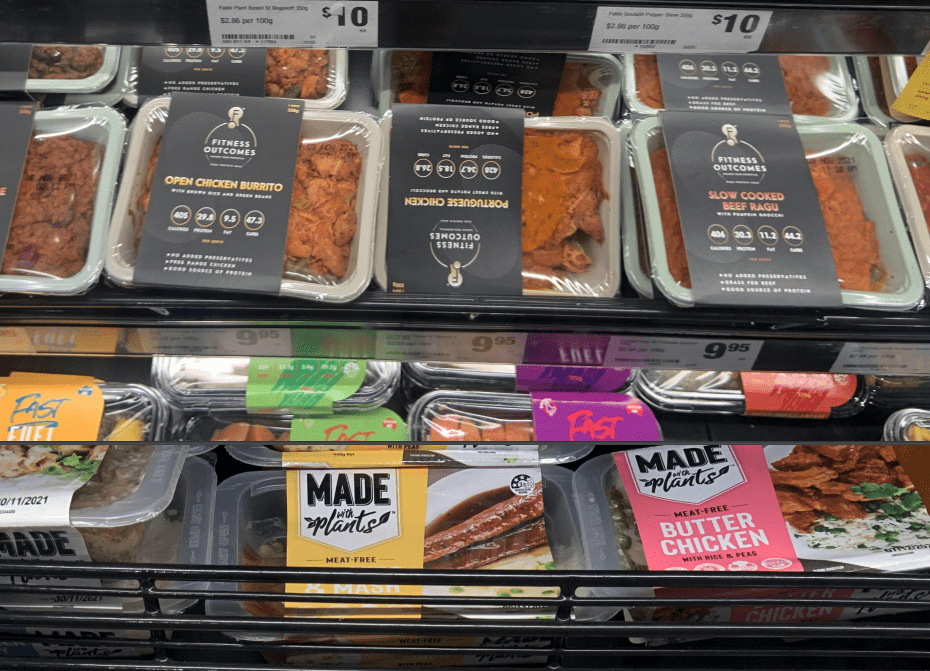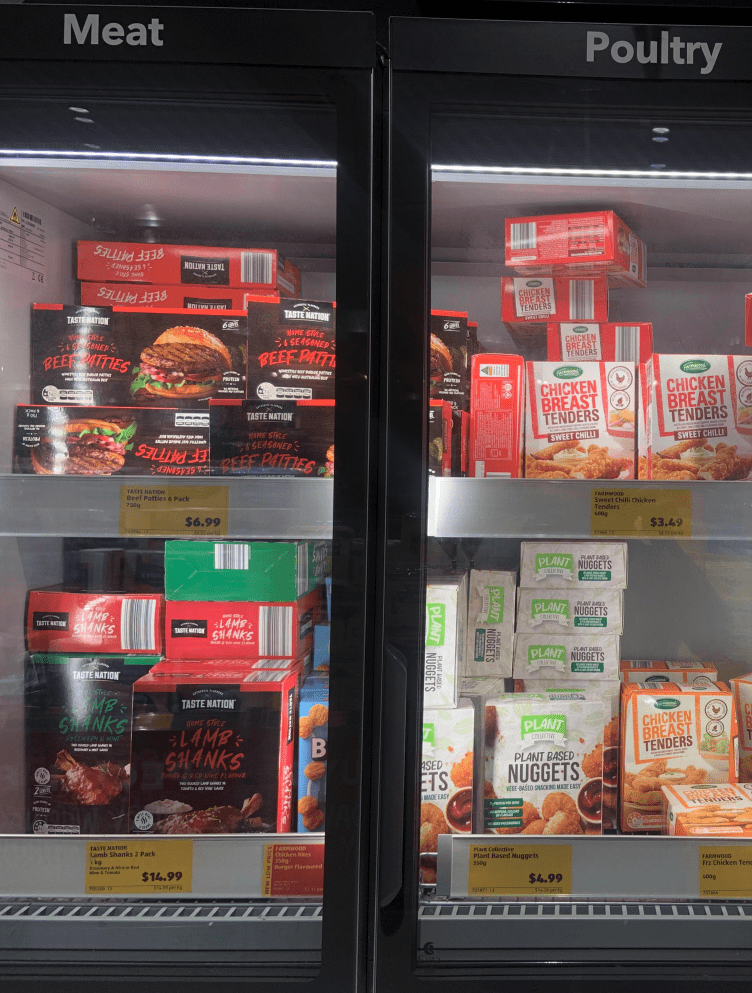AN intriguing aspect of the debate about whether plant-based protein manufacturers should be able to use animal-based descriptors to label imitation meat products surrounds the question of how to determine if current labelling is leading to consumer confusion.
For its part the fair trading regulator, the Australian Competition and Consumer Commission, takes a firm view in its submission to the Senate Inquiry into definitions of meat that current labelling practices are not likely to be confusing for consumers.
Yet in four days of Senate inquiry hearings so far there have been numerous accounts of witnesses sharing personal expriences of having mistakenly purchased a plant-based replica when they thought they were buying real meat.
Among them were two of the Senators conducting the inquiry.
‘Caught out by butter chicken’
Australian Labor Party senator Glenn Sterle said he had been “caught out” when he picked up a pre-packed container of butter chicken in a rush at a Woolworths supermarket after an all-day senate inquiry hearing in Brisbane.
“Back to the apartment and I got a rude shock,” he said.
‘Back to the apartment and I got a rude shock’
Nationals Senator and inquiry chair Susan McDonald has said she has been similarly caught off guard and has encountered widespread feedback from other consumers who say they have also felt duped by existing labelling.
“Universally people who are consumers of food are saying to me ‘I felt tricked, it wasn’t clear”, she said.
ACCC position based on lack of consumer reports
In its submission the ACCC expresses the firm view that the use animal terms or images on plant-based protein labels is unlikely to mislead consumers.
The ACCC does not claim in its submission to have conducted a major or comprehensive investigation into the issue of whether labelling is causing confusion.
Rather, its states that it has “from time to time considered” the issue when it has has received reports from consumers and industry, of which there have been very few, only 11 in the space of a year.
In reviewing those limited number of reports, the ACCC says that it “considers” the overall impression is that a court would be unlikely to find existing labelling practices misleading to an ordinary consumer.
Despite the apparent lack of in-depth rigour behind the ACCC’s stated position that consumer confusion is unlikely, its position has been seized upon by supporters of current labelling practices as proof no changes to food labelling rules are needed.
Where do confused consumers turn?
Yet, numerous people have told the inquiry they have been misled.
One view that has been put forward through the inquiry to explain why the ACCC is not seeing evidence of confusion that others say is clearly happening is the point that few consumers are likely to view the ACCC as the logical place to go to report a mistaken $10-$12 purchase.
Seafood Industry Australia CEO Veronica Papacosta told the inquiry she rejected suggestions the ACCC was fully aware of the situation.
“As a retailer, I can tell you that they’re not fully aware of the situation,” she said.
‘As a retailer, I can tell you that they’re not fully aware of the situation’
“Most Australians going about their day who get duped by a misleading pack either don’t have the time to make a phone call or don’t think they can complain about a mistake that they believe they made.
“Even if they did have the time or the inclination to complain, I don’t know that they would know who to call.
“If you were to question retailers and supermarkets at that consumer face, you’d get a much better read of what’s happening than going by what the ACCC say.”
 If the ACCC thought most Australians saw it as the place to report such a mistaken purchase, then “they really need to rethink their approach to this in terms of what consumers think they’re entitled to do”, she said.
If the ACCC thought most Australians saw it as the place to report such a mistaken purchase, then “they really need to rethink their approach to this in terms of what consumers think they’re entitled to do”, she said.
“I have called the ACCC on occasion and it’s not an easy landscape to navigate”, she added.
Examples of similar sentiments expressed to the inquiry include:
“That’s also our experience—that people who are unintentionally purchasing these products learn pretty quickly and don’t buy them again. It’s not an issue that they would potentially take to the ACCC. I think that’s why the ACCC has not heard as much noise as others within the industries have heard, because it’s more of a grievance. They’ll come back and talk about it to people within the industry and anyone else they’re talking to, but they’re not likely to write a letter or contact the ACCC on that issue.” – Corrine Dooley, trade and market access, Cattle Council of Australia
“Perhaps they’re in the middle of preparing dinner for their family. Perhaps it’s a small investment they’ve made; they feed their family and they just sort of forget about it. But, unless you’re actually there and take that call, rather than letting it go to voicemail or go through a complex answering process, I suspect a lot of those complaints don’t get registered.” Dr Vivien Kite, Executive Director, Australian Chicken Meat Federation
Animal Justice Party representative Dr Michael Fuery also told the inquiry that the ACCC is not the first choice to report an issue with a purchase: “… in terms of customer or consumer confusion, I also know that when I’ve been confused or I’ve not purchased the right item in the past, I don’t go to the ACCC; I ring up, say, Woolworth and say, ‘Hang on; I’ve bought something that I shouldn’t have by mistake.’”
Is quantitatve modelling needed?
Australian Greens Senator Lloyd Whish-Wilson noted the discrepancy between the ACCC’s position that “there is no evidence that there has been any impairment” and “anecdotal evidence from some presenters of confusion”.
Did that then mean qualitative and quantitative modelling needs to be done, he asked?
Such modelling may be required “if there is any ambiguity around the question”, NFF CEO Tony Mahar responded.
But, in his view, there was not.
“My understanding is that there is no ambiguity around the concerns that are coming from the sector and there is clear evidence of use of terms where the product is not what it says it is on the front,” Mr Mahar said.
ACCC claim that retailers separate plant and meat products challenged
In addition to its position that consumers are not being confused, the ACCC submission made another contentious statement.
That is that most retailers locate plant-based products in a different section to meat, making it “even more unlikely for consumers to be misled”.
On Monday Senator Susan McDonald tabled pictures, including the two below, taken by her staff at three supermarkets clearly showing plant-based replicas and conventional meat products being stacked together on shelves:
“The ACCC did a review saying that the two products were not being sold together, yet I know that I could walk into any supermarket and see them together today,” Senator McDonald said.
Senator Glenn Sterle said he believed that his confusion at a supermarket in Brisbane was due as much to the placement of the products, as it was to the labelling and the fact that references to plant-based contents were in “micro writing”.
Supermarkets mixing products together was “catching people out”, he said.
“By all means, keep the plant-based alternatives for those who want to make that life choice, but it’s a little bit mischievous mixing them in with the meat products.”




So where do we complain. I bought burgers to cook for my grandchildren in a hurry only to discover when I opened the pack thar they were ‘fake’ meat.
Why doesn’t Beef Central set up a complaints page?
Not a bad idea, Ian. Let’s look into it. Your own experience will be a good start. Editor
I regularly see the manufactured “fake” meat product displayed adjacent to the farmed real meat in the supermarkets that I shop in. I also consider the labelling confusing and misleading. These products are not meat, nor are they chicken or beef and should not be labelled as such. I would not have thought that the ACC would be the place to complain.
The sooner the issue of misrepresentation is sorted, concern about confusion will be less worrying .
I have seen this in the local supermarket, wouldn’t touch it,l. I didn’t know I could complain and certainly didn’t know to whom I could complain.